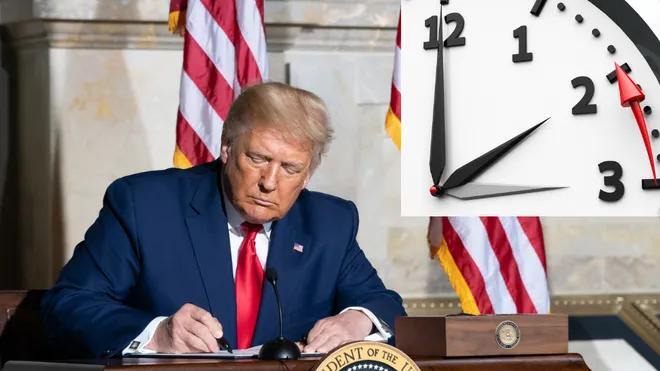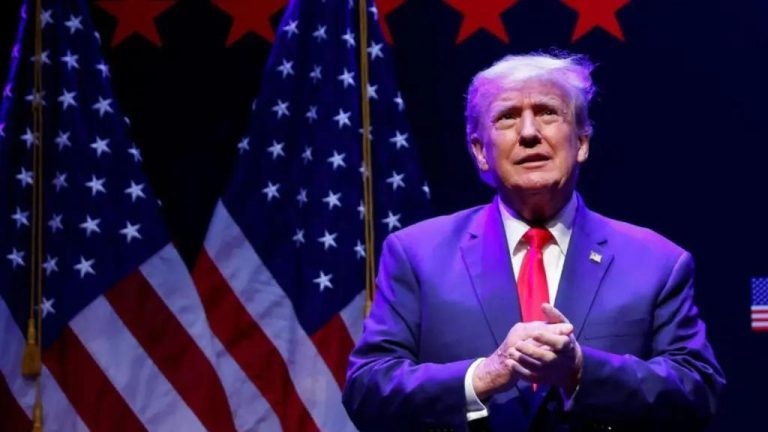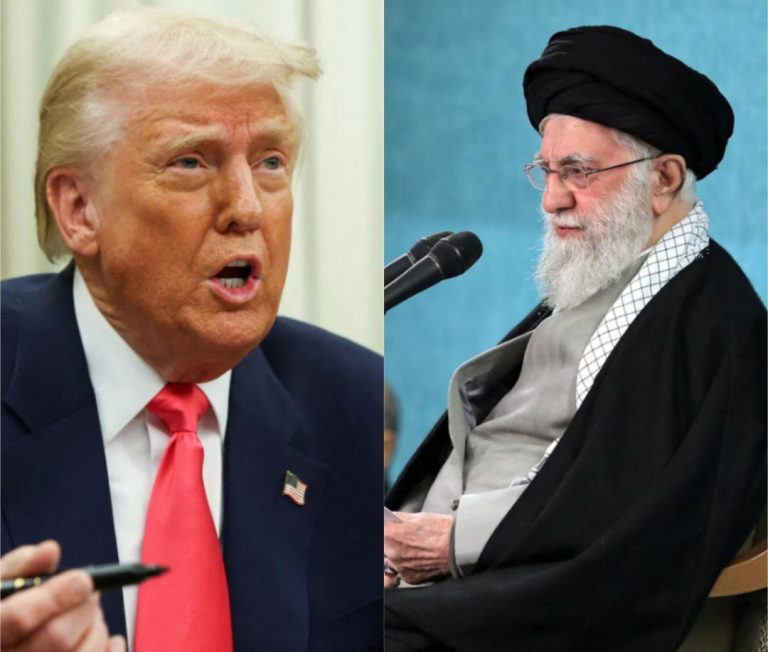
Title: Trump Calls for End to Daylight Saving Time
In a recent post on his social media platform, Truth Social, former President Donald Trump has reignited the debate on daylight saving time (DST). Trump called for Congress to scrap the biannual clock change, labeling it a costly inconvenience for Americans. This move has sparked a fresh wave of discussion on the topic, with many wondering what it could mean for the country.
Daylight Saving Time (DST) is the practice of setting clocks forward by one hour during the summer months, typically starting on the second Sunday in March and ending on the first Sunday in November. The idea behind DST is to make better use of natural daylight during the summer months, when the sun is up for longer periods. However, many argue that the benefits of DST are outweighed by the negative effects it has on daily life.
Trump’s call to end DST has sparked a mixed reaction, with some supporting the move and others opposing it. Some argue that the clock changes can disrupt sleep patterns, impact work schedules, and cause confusion. Others claim that the benefits of DST, such as increased energy consumption and improved economic activity, outweigh the drawbacks.
Despite the mixed reaction, there is growing bipartisan support to end the practice of DST. In recent years, several bills have been introduced in Congress aimed at scrapping the biannual clock change. However, these efforts have stalled due to disagreements over what time zone to adopt permanently.
One of the main challenges to ending DST is deciding what time zone to keep permanently. Some argue that the country should adopt a single, year-round time zone, while others propose adopting a time zone that is closer to the country’s geographic center. This disagreement has led to a stalemate in Congress, with lawmakers unable to agree on a solution.
Despite the challenges, there are several benefits to ending DST. For one, it could simplify travel and scheduling, as people would no longer have to adjust their clocks twice a year. Additionally, it could reduce the economic costs associated with DST, such as the increased energy consumption and the impact on businesses and industries.
However, there are also several potential drawbacks to consider. One of the main concerns is the impact on energy consumption. While some argue that DST reduces energy consumption by making better use of natural daylight, others claim that the increased energy consumption associated with air conditioning and other cooling methods offsets any potential savings.
Another concern is the impact on public health. Some studies have suggested that the clock changes can have negative effects on people’s health, including increased rates of heart attacks, strokes, and depression. Additionally, the disruptions to daily routines and schedules can cause stress and anxiety.
Despite these concerns, many experts believe that the benefits of ending DST outweigh the drawbacks. For one, it could improve public safety, as people would no longer have to worry about the risks associated with the clock changes. Additionally, it could reduce the economic costs associated with DST, making it a more cost-effective option for the country.
In conclusion, Trump’s call to end DST has sparked a fresh wave of discussion on the topic. While there are valid arguments on both sides, the growing bipartisan support to end the practice suggests that change may be on the horizon. As the country debates the future of DST, it is essential to weigh the benefits and drawbacks of the practice and consider what is best for the American people.
News Source:
https://www.breezyscroll.com/world/the-us/trump-calls-for-end-to-daylight-saving-time-what-it-means-for-americans/




